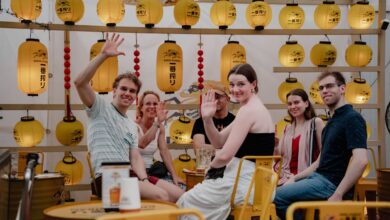How South Korea Plans to Best OpenAI, Google, Others with Homegrown AI

How South Korea Plans to Best OpenAI, Google, Others with Homegrown AI
Estimated Reading Time: 7 minutes
- Sovereign AI Goal: South Korea is building its own AI, including unique LLMs from LG, SK Telecom, Naver, and Kakao, to compete with global giants like OpenAI and Google, driven by a desire for technological independence and economic resilience.
- Cultural & Linguistic Optimization: A core strategy involves developing AI models highly optimized for the Korean language, culture, and industry, providing a significant competitive edge over generic global models.
- Integrated National Effort: The nation’s approach combines substantial government investment, talent cultivation, robust data infrastructure, ethical frameworks, and industry-specific specialization (e.g., semiconductors, manufacturing).
- Naver’s HyperClova X: A prime example of this strategy is Naver’s HyperClova X, an ultra-large-scale LLM specifically designed for Korean, showcasing the immense potential for culturally specific AI to thrive.
- Challenges & Opportunities: While facing challenges like resource scale and talent retention, South Korea leverages opportunities in niche specialization, strategic alliances, and its advanced infrastructure to drive innovation and become a definitive force in global AI.
- The Rationale Behind a Sovereign AI Strategy
- Key Pillars of South Korea’s AI Advancement
- Navigating the Challenges and Opportunities
- Actionable Steps for Engagement in South Korea’s AI Landscape
- Conclusion
- Frequently Asked Questions (FAQ)
In the global race for artificial intelligence supremacy, a powerful new contender is emerging from East Asia. South Korea, a nation renowned for its technological prowess and rapid innovation, is not content to merely observe the advancements of global giants like OpenAI and Google. Instead, it is charting an ambitious course to develop its own sovereign AI capabilities, aiming to compete directly on the world stage.
This strategy is born from a desire for technological independence, economic resilience, and the need for AI models that truly understand and cater to Korean language, culture, and industry. The stakes are incredibly high, as the future of economic power, national security, and digital sovereignty increasingly hinges on who controls the most advanced AI.
South Korea’s integrated approach, combining government backing with the formidable might of its leading conglomerates and vibrant startup ecosystem, positions it as a significant player. The world is watching to see if this concentrated national effort can indeed yield a new generation of AI that stands shoulder-to-shoulder with, or even surpasses, the current market leaders.
The Rationale Behind a Sovereign AI Strategy
The motivation for South Korea to pursue its own AI development runs deep, extending beyond mere technological competition. At its core, this initiative is about national self-determination in the digital age. Relying solely on foreign-developed AI models, however advanced, presents several long-term risks, including data sovereignty concerns, potential biases baked into the models, and a lack of control over critical infrastructure.
South Korea has launched its most ambitious sovereign AI initiative yet, as the nation’s major tech players like LG and SK Telecom develop their own LLMs. This pivotal move signifies a unified national resolve. These homegrown Large Language Models (LLMs) are not just about replicating existing technology; they are designed to be optimized for the Korean language, understanding its nuanced grammar, context, and vast cultural specificities that generic global models often struggle with. This cultural relevance is a significant competitive edge in a highly localized digital economy.
Furthermore, developing proprietary AI ensures that sensitive national data remains within the country’s borders, subject to local regulations and ethical frameworks. This control is crucial for applications in defense, public administration, and critical national infrastructure. Economically, fostering a domestic AI industry creates high-value jobs, stimulates innovation across sectors, and positions South Korea as an exporter of cutting-edge AI solutions rather than just an importer.
The government’s role is not just as a financier but as a orchestrator, facilitating collaboration between academia, industry, and research institutions. This synergistic approach aims to create a robust ecosystem capable of sustained innovation and rapid deployment, leveraging the country’s existing strengths in semiconductors, manufacturing, and telecommunications.
Key Pillars of South Korea’s AI Advancement
South Korea’s strategy is built upon several foundational pillars designed to foster an environment where AI can thrive and scale nationally. Each element is crucial for creating a self-sustaining and globally competitive AI ecosystem.
Massive Investment and Dedicated Funding
The government has committed substantial financial resources to AI research and development, viewing it as a strategic national priority. This funding fuels university research, supports innovative startups, and incentivizes large corporations to accelerate their AI divisions. Private sector investment, particularly from conglomerates like Samsung, LG, SK Group, Naver, and Kakao, complements public funding, ensuring a continuous flow of capital into cutting-edge projects and infrastructure development.
Talent Cultivation and Attraction
Recognizing that human capital is the ultimate engine of AI innovation, South Korea is heavily investing in education and training. Programs range from specialized AI degrees at top universities to vocational training for workers in various industries. Efforts are also underway to attract leading global AI researchers and engineers, while simultaneously creating an environment that retains top domestic talent, preventing a ‘brain drain’ to foreign tech hubs. Scholarships, research grants, and favorable working conditions are key components of this strategy.
Robust Data Infrastructure and Ethical Frameworks
High-quality, diverse datasets are the lifeblood of effective AI. South Korea is investing in building extensive national data repositories, carefully curated and annotated for various applications, particularly for its unique linguistic and cultural context. Alongside this, the nation is proactively developing strong ethical guidelines and regulatory frameworks for AI. This ensures responsible development and deployment, building public trust and addressing concerns around privacy, bias, and accountability – factors critical for long-term societal adoption.
Industry-Specific Specialization and Synergy
Instead of a scattergun approach, South Korea is leveraging its existing industrial strengths. This includes developing AI solutions tailored for its world-leading semiconductor industry, advanced manufacturing, automotive sector, and smart city initiatives. The synergy between AI and these established sectors creates practical applications and immediate market opportunities, driving both innovation and commercialization. Close collaboration between government, industry, and academia ensures that research translates directly into tangible products and services.
Real-World Example: Naver’s HyperClova X
A prime example of South Korea’s sovereign AI ambition is Naver’s HyperClova X. Launched by South Korea’s dominant search engine and internet giant, HyperClova X is an ultra-large-scale LLM specifically designed to understand and generate Korean with unparalleled nuance. It powers Naver’s suite of services, from search and content creation to generative AI tools for businesses. Unlike global models trained predominantly on English data, HyperClova X excels in handling Korean idioms, slang, and cultural context, making it indispensable for domestic applications and giving Naver a significant competitive edge in its home market. Its development showcases the potential for culturally specific AI to thrive.
Navigating the Challenges and Opportunities
While South Korea’s AI ambitions are grand, the journey is fraught with significant challenges, yet also ripe with unique opportunities that could propel it forward.
Overcoming the Scale and Resource Gap
One of the primary hurdles is the sheer scale of investment and computing power commanded by global leaders like OpenAI, backed by Microsoft, and Google. These companies have effectively limitless resources for data collection, model training, and talent acquisition. South Korea, despite its significant commitments, must innovate smartly, perhaps by focusing on efficiency, specialized architectures, or highly optimized models rather than trying to outspend its rivals in raw compute power.
Talent Retention and Global Competition
Attracting and retaining top AI talent remains a global challenge. Korean researchers and engineers are highly sought after by international tech giants, often offering more lucrative compensation and opportunities in larger markets. South Korea must continue to cultivate an appealing domestic ecosystem that provides compelling research opportunities, competitive salaries, and a vibrant innovation culture to prevent its best minds from moving abroad.
Niche Specialization and Strategic Alliances
The key opportunity lies in specialization. Instead of a direct head-on confrontation across all AI domains, South Korea can focus on areas where it has inherent advantages – such as its advanced semiconductor industry, robotics, smart manufacturing, and culturally specific AI for the Korean-speaking world. Forging strategic international alliances, rather than operating in isolation, could also broaden its reach and accelerate development by sharing resources and expertise.
Furthermore, South Korea’s robust 5G infrastructure and high internet penetration provide an ideal testing ground and deployment environment for new AI services, allowing for rapid iteration and real-world application. Its disciplined, highly educated workforce and strong work ethic are also assets that contribute to a fast-paced development cycle.
Actionable Steps for Engagement in South Korea’s AI Landscape
For individuals, businesses, and policymakers looking to engage with or benefit from South Korea’s burgeoning AI sector, here are three actionable steps:
- For Global Tech Businesses: Explore Collaborative Partnerships and Market Entry. South Korean conglomerates and startups are actively seeking international partners for co-development, market expansion, and technology exchange. Businesses looking to leverage cutting-edge AI in specific sectors (e.g., smart factories, autonomous vehicles, cultural content) should investigate joint ventures, R&D collaborations, or direct investment opportunities within the Korean AI ecosystem.
- For AI Developers and Researchers: Focus on Culturally Nuanced and Specialized AI. The unique linguistic and cultural context of South Korea offers a rich field for specialized AI development. Developers and researchers can gain a competitive edge by focusing on models that excel in Korean language processing, understanding East Asian cultural specificities, or addressing challenges unique to highly urbanized, tech-dense societies, where global models may fall short.
- For Policymakers and Governments: Study South Korea’s Integrated National AI Strategy. South Korea’s holistic approach, combining government funding, industry mandates, talent development, and ethical guidelines, provides a valuable blueprint. Other nations aiming for AI sovereignty or leadership can learn from this integrated model, particularly regarding the coordination between public and private sectors to achieve strategic technological goals.
Conclusion
South Korea’s pursuit of sovereign AI is a testament to its long-standing commitment to technological leadership and national self-reliance. By fostering an ecosystem that encourages aggressive R&D, cultivates top-tier talent, and leverages its unique cultural and industrial strengths, the nation is making a clear statement: it intends to be a definitive force in the global AI landscape, not just a consumer of foreign innovation.
The journey to best global giants like OpenAI and Google is undoubtedly challenging, demanding sustained investment, unwavering focus, and ingenious innovation. However, with the collective might of its government, chaebols, and a dynamic startup scene, South Korea is meticulously laying the groundwork for an AI future that is distinctively Korean and globally competitive. The world watches eagerly to see how its homegrown AI will shape the next era of technological advancement.
Want to stay ahead in the rapidly evolving world of AI?
Follow the latest developments in South Korea’s AI initiatives and discover how these advancements could impact your industry or research.
Frequently Asked Questions (FAQ)
Why is South Korea investing heavily in homegrown AI?
South Korea is pursuing sovereign AI for national self-determination, economic resilience, and technological independence. This prevents reliance on foreign models, addresses data sovereignty concerns, and ensures AI is optimized for the unique Korean language, culture, and industry context.
What are some major Korean companies developing LLMs?
Key players include LG, SK Telecom, Naver (with its HyperClova X), and Kakao. These conglomerates are at the forefront of developing large language models specifically tailored for the Korean market and its nuances.
How is South Korea tackling the global competition for AI talent?
The nation is investing heavily in education and training, offering specialized AI degrees and vocational programs. It also aims to attract and retain top global and domestic talent through research grants, competitive salaries, and fostering a vibrant innovation culture to prevent ‘brain drain’.
What role does the Korean government play in this AI strategy?
The government acts as both a financier and an orchestrator. It commits substantial funding to R&D, facilitates collaboration between academia, industry, and research institutions, and develops ethical guidelines and regulatory frameworks for responsible AI development and deployment.
How does Korea plan to compete with resource-rich global AI giants?
South Korea’s strategy focuses on smart innovation, efficiency, specialized architectures, and highly optimized models. It also leverages its existing industrial strengths (semiconductors, robotics, smart manufacturing) and culturally specific AI, while seeking strategic international alliances to share resources and expertise.





